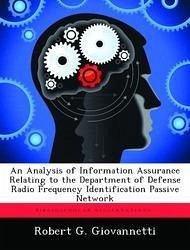The mandates for suppliers to commence Radio Frequency Identification tagging set by Wal-Mart and the Department of Defense is changing this long-time rumored technology into reality. Despite the many conveniences to automate and improve asset tracking this technology offers, consumer groups have obstinately opposed this adoption due to the perceived weaknesses in security and privacy of the network. While the heated debate between consumers and retailers continues, little to no research has addressed the implications of security on the Department of Defense Radio Frequency Identification network. This thesis utilized a historical analysis of Radio Frequency Identification literature to determine whether the current network design causes any serious security concerns adversaries could exploit. The research concluded that at the present level of implementation, there is little cause for concern over the security of the network, but as the network grows to its full deployment, more evaluation and monitoring of security issues will require further consideration.
Hinweis: Dieser Artikel kann nur an eine deutsche Lieferadresse ausgeliefert werden.
Hinweis: Dieser Artikel kann nur an eine deutsche Lieferadresse ausgeliefert werden.








